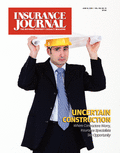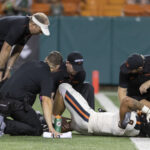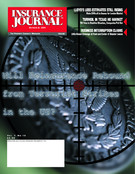The destruction of the twin towers of New York’s World Trade Center and the sealing off of a large portion of lower Manhattan brought hundreds of business activities to a standstill, from the local newsstand to giant corporations. The loss of human life and the sheer destruction wrought by the attacks far exceeds any worst case disaster scenario a risk manager could conceive.
This disaster will test the insurance industry as never before. One of the most vital components for rebuilding New York and the nation’s confidence is going to be prompt claims payment. In one day New York’s downtown area lost 20 percent of its office space, including 38 percent of its “high tech” facilities. The National Association of Independent Insurer’s Nancy Schroeder indicated that the WTC “housed roughly 50,000 employees, and was “home to 430 businesses.” The essential task of getting these businesses back up and running cannot be accomplished without the insurance industry’s help, and especially critical is the implementation of coverage as provided in business interruption policies.
Business Interruption Coverage (BIC) may not be as widely distributed as fire or personal liability insurance. Smaller businesses can’t always afford it and larger companies are frequently self-insured. Nonetheless it’s a common area of coverage in many policies, particularly since the increased dependence on computers and technology has made businesses more vulnerable to losses caused by breakdowns.
Donald Griffin, the NAII’s Director of Business and Personal lines, said in a press bulletin, “Business interruption insurance is very complicated and not everyone buys it. Professional firms, such as law offices, accounting firms and consulting companies may not be as likely to buy such insurance as would a retail store or a manufacturing plant.” He stressed the ongoing nature of the coverage, noting that “payments for many of these losses will continue for months to come.”
Separating business losses from other types of coverage might also prove difficult. As the Insurance Information Institute pointed out in a recent bulletin, “Business interruption coverage is not sold separately. It is added to a property insurance policy or included in a package policy.” There are also policies that cover “interruption of commerce,” which protect a business from losses, even though it hasn’t suffered physical damage, as when a key supplier is unable to deliver essential parts.
As the III bulletin points out, “Business interruption insurance covers the profits you would have earned, based on your financial records, had the disaster not occurred.” It also notes the difference between BIC and “Extra Expense Insurance” which reimburses a company for amounts it spends “over and above normal operating expenses.” These are usually paid as an adjunct to the BIC payments.
Dan Martinez, the CEO of Insurance Claims Consultants in Wichita, Kan., noted that on the whole business interruption coverage has until now been relatively cheap, as most insurers didn’t anticipate that much exposure from it. Following the WTC disaster that’s no longer the case.
Martinez explained that most business interruption policies “are based on the amount of loss of income the insured suffers as a result of the covered peril.” They can be either standard policies, with “boilerplate” language setting out what the insurer will pay, or special endorsements, which are individually negotiated. In all cases there will be some kind of policy limits, and the insured has a duty to mitigate the amount of the loss.
An insurance company usually pays for the insured’s relocation and the purchase or lease of new equipment so that the business can recommence operations, since as soon as a company is up and running again, its losses decline.
The amounts paid on BIC policies depend on the circumstances. “You have to consider whether it’s a main office or a branch,” said Martinez. “There are also disputes over new locations, whether business is lost because the company isn’t in as favorable a location, or whether it’s lost because they didn’t make enough effort to reestablish their business.”
The policy limits may range from a few hundred thousand for small business coverage to many millions for the loss of a manufacturing center. For example, AIG’s netAdvantage security program, which covers computer failures, hacking, etc., offers limits up to $25 million. Lloyd’s limits are $50 million, rising to $100 million through reinsurance.
“In many cases an insurance company will pay the amount of the policy limits, rather than enter into protracted litigation over the amount of the loss,” said Martinez, “especially since a court may well award the claimant more than the policy limits if the company decides to contest it.” That strategy may well explain the predictions of large losses from business interruption resulting from the WTC disaster. “If they had their headquarters in the buildings, and they’re no longer in business, the companies are going to tender the policy limits,” said Martinez. He noted that this happened after Hurricane Andrew in 1992. “An adjuster would look at where the house used to be, see only a foundation left, and write a check. The WTC is going to be the same thing.”
He also indicated that “larger claims are settled more quickly,” and the ones from the WTC will fall into this category. In addition, many of the companies located there won’t be able to submit all the documents and records required as proof of their losses, because, unless they were backed up outside the affected area, such documentation no longer exists.
The time to pay claims on BIC is fairly short. “Generally, state insurance commissioners require that a claim be paid within 30 days, or that the insurer explain the delay in writing,” said Martinez. “They also have to explain the reasons every 30 days after that until the claim is paid. Even if many companies don’t follow this rule, they still have to pay interest on the amount of the claim starting from the first date payment was due.” The theory behind this being that as the insurer earns money on the claim amount, it should in turn pay interest to the insured.
If Martinez’ experience holds true for WTC claims, it means that the primary insurers are going to be paying out a lot of money fairly rapidly for business interruption to firms that were affected by the disaster—in many cases policy limits in the millions of dollars. As BIC has been, until now, only a small part of most insurers disaster loss experience, it helps to explain why companies like Swiss Re, Munich Re, AIG, Chubb and the Lloyd’s market have all said that business interruption coverage will be a large part of their losses—and they can’t accurately estimate how much.
One after another the insurers have upped their loss estimates, citing BIC as the reason. Allianz, the parent company of Fireman’s Fund, increased its estimate from $637 million to $928 million “largely due to claims from business interruptions.” AIG CEO Maurice “Hank” Greenberg said that liability and business interruption claims were “likely to be the most damaging and unpredictable for insurers.” Munich Re doubled its loss estimates from $915 million to $1.94 billion, Swiss Re from $750 million to $1.25 billion, each one warning of the open ended liabilities from business interruption.
One sign that Martinez’ analysis is correct is the fact that his company has received “no calls, despite the losses” since the disaster. After catastrophes like Hurricane Andrew or Hugo, dozens of agents contacted him, Martinez said. Another indication comes from Partner Re CEO Patrick Thiele, who stated in reference to his company’s loss estimates of $350 to $400 million that, “For the bulk of its exposures, PartnerRe has put up losses equal to the policy or occurrence limits.”
The immediate consequences for the insurers will be facing history’s biggest loss event. Over the longer term “premiums that were already increasing will go still higher,” according to Martinez. “In the long run this will hurt a lot of businesses.” He also indicated that the policy limits on business interruption would be lowered and there would be much more rigorous analysis of the risks involved. “It’s probably justified,” he concluded, “as the exposures increase so do the premiums.”
Topics Carriers Profit Loss Claims New York
Was this article valuable?
Here are more articles you may enjoy.


 DC Sues 4 Drivers With 1,000 Outstanding Traffic Violations
DC Sues 4 Drivers With 1,000 Outstanding Traffic Violations  College Team Physicians Wary of Greater Liability Risk With Athletes Making Money
College Team Physicians Wary of Greater Liability Risk With Athletes Making Money  Two More Insurers Enter Florida Market as Hurricane Season Warms Up
Two More Insurers Enter Florida Market as Hurricane Season Warms Up  End to Florida Agents’ ‘Diligent Effort’ Rule on Surplus Lines Takes Effect July 1
End to Florida Agents’ ‘Diligent Effort’ Rule on Surplus Lines Takes Effect July 1 


